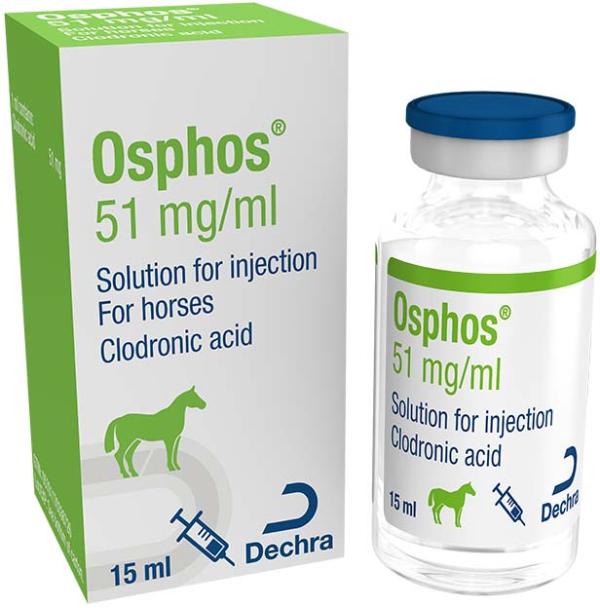Osphos
For the alleviation of clinical forelimb lameness associated with the bone resorptive processes of the distal sesamoid (navicular bone) in adult horses.
| Active(s): | Clodronic acid |
| Pack size(s): | 15ml |
| Withdrawal period: | Meat and offal: Zero days. Not authorised for use in animals producing milk for human consumption. |
| Documents: | SPC get_app MSDS lock_outline |

